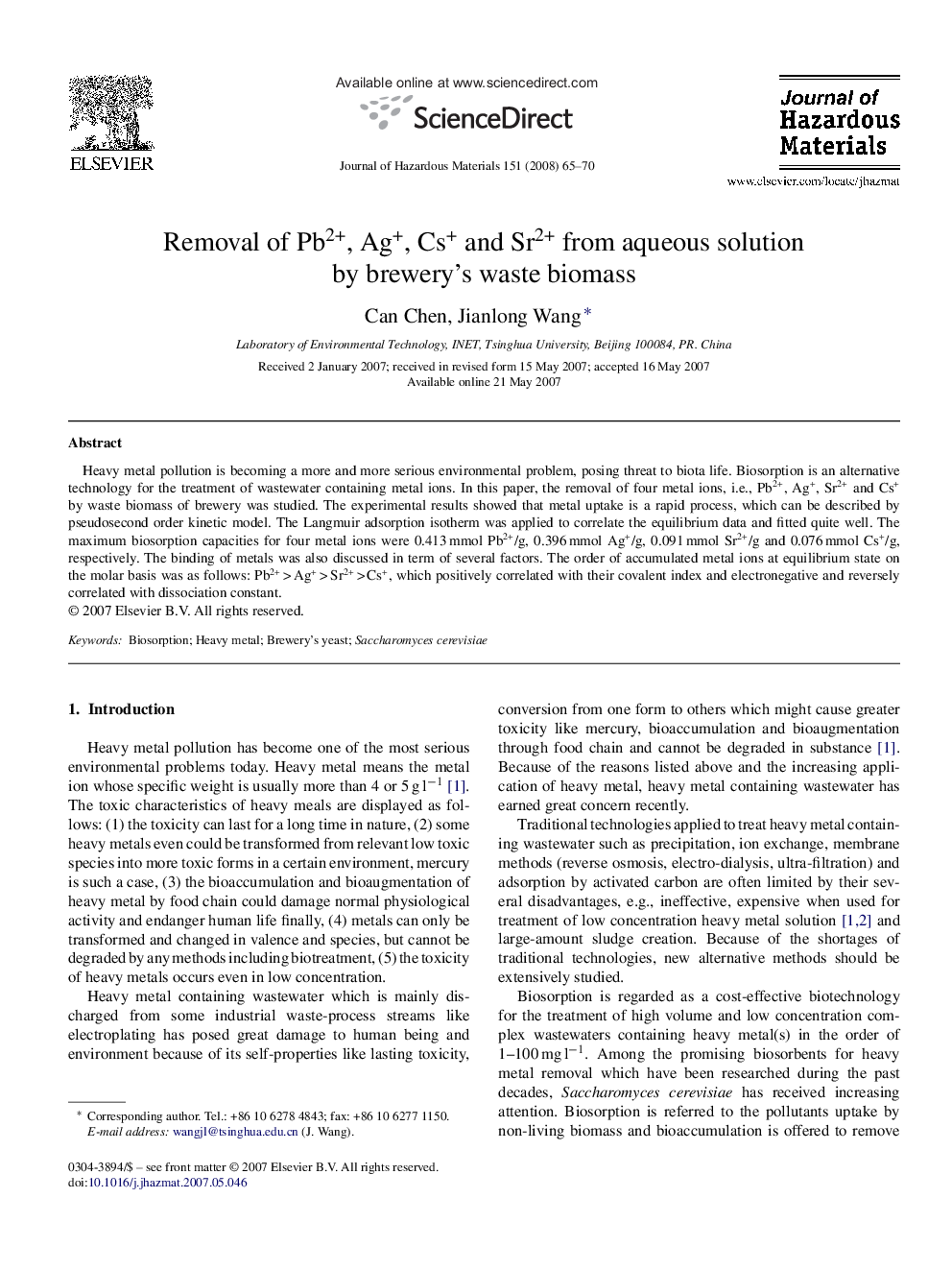| Article ID | Journal | Published Year | Pages | File Type |
|---|---|---|---|---|
| 583527 | Journal of Hazardous Materials | 2008 | 6 Pages |
Abstract
Heavy metal pollution is becoming a more and more serious environmental problem, posing threat to biota life. Biosorption is an alternative technology for the treatment of wastewater containing metal ions. In this paper, the removal of four metal ions, i.e., Pb2+, Ag+, Sr2+ and Cs+ by waste biomass of brewery was studied. The experimental results showed that metal uptake is a rapid process, which can be described by pseudosecond order kinetic model. The Langmuir adsorption isotherm was applied to correlate the equilibrium data and fitted quite well. The maximum biosorption capacities for four metal ions were 0.413Â mmol Pb2+/g, 0.396Â mmol Ag+/g, 0.091Â mmol Sr2+/g and 0.076Â mmol Cs+/g, respectively. The binding of metals was also discussed in term of several factors. The order of accumulated metal ions at equilibrium state on the molar basis was as follows: Pb2+Â >Â Ag+Â >Â Sr2+Â >Â Cs+, which positively correlated with their covalent index and electronegative and reversely correlated with dissociation constant.
Related Topics
Physical Sciences and Engineering
Chemical Engineering
Chemical Health and Safety
Authors
Can Chen, Jianlong Wang,
